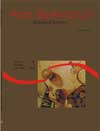<strong>Constructed wetland in wastewater treatment</strong> - DOI: 10.4025/actascibiolsci.v30i3.5002
Keywords:
effluent, wastewater, physical and chemical parameters, macrophyte
Abstract
Physical and chemical variables of soil and water were measured to determine the effectiveness of a constructed wetland for wastewater treatment. Eight different macrophyte species, namely Eichhornia crassipes, Alternanthera philoxerodos, Heteranthera reniformis, Hydrocotyle umbeliferae, Ludwigia elegan, Ludwigia sericea, Myriophyllum aquaticum and Thypha domingensis, were transplanted. Inlet water and outlet water were the two sampling sites evaluated. There were significant differences (p < 0.05) when limnological characteristics between inlet and outlet water from the constructed wetland were compared. In general, dissolved oxygen was over 4 mg L-1, and conductivity was high, above 80 µS cm-1. Chlorophyll-a levels generally tended to decrease at the wetland outlet and were higher during the rainy period (fish growth period). Results show that ammonia, total phosphorus, BOD5, phosphorus and organic matter in the sediment removals in the constructed wetland were higher, indicating that macrophytes played an important role in removing these variables. The use of constructed wetland is a viable technology for the biological treatment in aquaculture and swine wastewater.Downloads
Download data is not yet available.
Published
2008-09-12
How to Cite
Sipaúba-Tavares, L. H., & Braga, F. M. de S. (2008). <strong>Constructed wetland in wastewater treatment</strong> - DOI: 10.4025/actascibiolsci.v30i3.5002. Acta Scientiarum. Biological Sciences, 30(3), 261-265. https://doi.org/10.4025/actascibiolsci.v30i3.5002
Issue
Section
Ecology and Limnology
DECLARATION OF ORIGINALITY AND COPYRIGHTS
I Declare that current article is original and has not been submitted for publication, in part or in whole, to any other national or international journal.
The copyrights belong exclusively to the authors. Published content is licensed under Creative Commons Attribution 4.0 (CC BY 4.0) guidelines, which allows sharing (copy and distribution of the material in any medium or format) and adaptation (remix, transform, and build upon the material) for any purpose, even commercially, under the terms of attribution.
Read this link for further information on how to use CC BY 4.0 properly.
0.6
2019CiteScore
31st percentile
Powered by 

0.6
2019CiteScore
31st percentile
Powered by 











1.png)




3.png)













